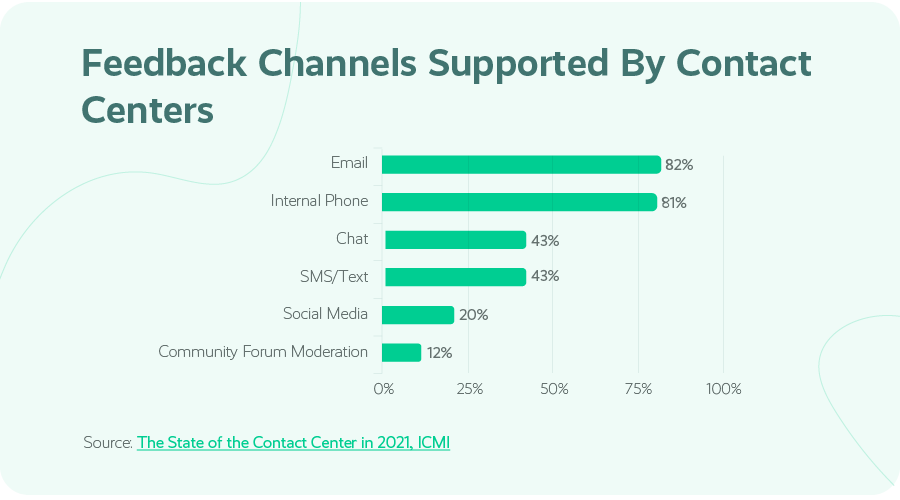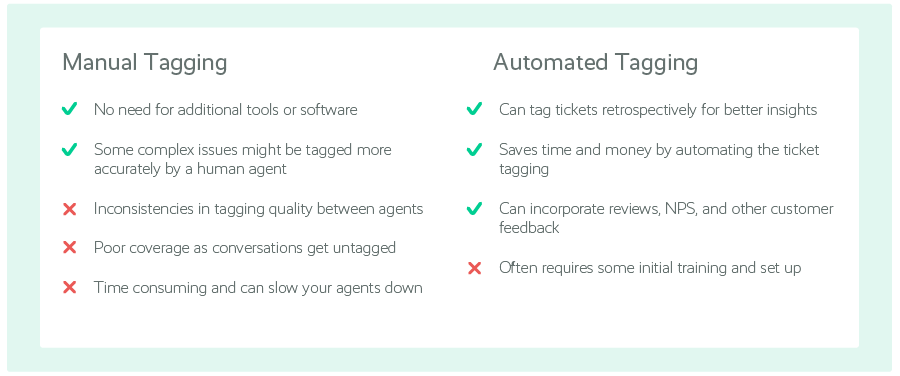What is Customer Sentiment Analysis — and Why is it Important?
Words matter, but language is complex and often left to interpretation. That’s especially true in your contact center, where millions of customer interactions across dozens of platforms can leave you overwhelmed by information and unable to act on what you hear from your customers.
The rise in conversational commerce — chat interactions on a variety of platforms with customers before, during, and after a sale — is creating even more data to analyze and track.
To take control, you’ve got to understand customer sentiment — how customers feel about your product or service. They tell you bit by bit in every interaction, leaving a trail of crucial insights hidden in how they talk about your solutions. But if you’re not listening, you could miss out.

What is Customer Sentiment Analysis?
Customer sentiment analysis is a data-based way of measuring positive, neutral, or negative feelings in text like your customer’s emails, chats, texts, social media posts, and online reviews. A sentiment score assigns a value ranging from +1 (extremely positive) to -1 (extremely negative) for certain words or phrases customers might use.
Part of natural language processing (NLP), automated sentiment analysis goes beyond simple praise or criticism to interpret attitudes and emotions from text.
For example, a customer review that says “I love my new laptop,” is easily interpreted as positive. But what about a review that uses slang like “This new laptop is straight fire” or a sarcastic “I love my new laptop — it’s so fun to wait two minutes for it to boot up”?
A simple sentiment analysis tool that’s programmed to only look for certain words or phrases might miss the point of the second and third examples.
But over time, customer sentiment analysis driven by artificial intelligence (AI) will learn to better interpret the language your customer base is using to describe their experience. So your support center can measure customer opinions no matter what words they use.
How Can Sentiment Analysis be Used to Improve Customer Experience
By unearthing the hidden gems your customers leave in their feedback, you’ll be able to take decisive action across your business.
Understand Your Customers
In a 2022 Gartner report, 79% of respondents said their organization struggled to use customer personas to support CX efforts effectively. Sentiment analysis helps you uncover your customers’ core concerns and problems so you can build out a more robust persona that results in more empathy during support interactions.
Successful CX programs are 2.3 times more likely to be focused on the customer journey than on the path to purchase, the Gartner survey revealed. That means zeroing in on what customers are saying after they’ve bought your product or service and making sure to nurture that relationship. As many say, keeping an existing customer is far less expensive than acquiring a new one.
De-Emphasize Human Interpretation
Humans have a lot of biases that can affect your customer experience if they’re given too much weight. You’ve probably heard one of your agents say something like, “All our customers hate the new report style we just released.” Is that negative sentiment true, or has that agent just experienced confirmation bias and decided on an outcome that agrees with their own beliefs?
In this example, you can leverage data to get to the truth. Using historical sentiment analysis and machine learning, an AI solution can find trends and predictors of success or failure that aren’t limited by human interpretation or bias. You’ll quickly rid yourself of generic absolutes like “all,” “none,” “always,” and “never,” and see what customers are really saying.
Your sales, marketing, and product development teams will also benefit from the actionable insights that come from this hard data. It’s too easy to make assumptions about what customers want or need in your solution. By analyzing how customers feel about your products and services, your entire organization will have a better understanding of your customers’ wants and needs.
Solve Problems Faster
When you use sentiment analysis to drive your customer experience, you can find issues with your solution — and fix them — sooner. Waiting for enough agents to bring customers’ negative experiences to your product team’s attention could mean that a major issue goes unaddressed for too long — and ends up costing you business.
Taking proactive measures based on what you hear from customers in negative reviews or during interactions will reduce complaints and ticket volume. In turn, you’ll see improved customer satisfaction and a decrease in the overall load on your customer support center agents.
Learn What Customers Enjoy — and Keep It Coming
By the same token, you can find out what your customers like most about your products and services and do more of the same. In a 2022 Qualtrics study, 63% of consumers surveyed said businesses need to do a better job of listening to feedback. If you truly listen to the positive sentiment in what your customers are saying and act on it, you’ll quickly become an organization they trust and build customer loyalty. Acting on these insights lets you deliver on customer expectations and double down in areas you know work well.
Related Article: Why You Should Analyze Customer Conversations In Chat
How to Do Customer Sentiment Analysis
To get the best feel for where your customer sentiment is headed, it’s important to collect omnichannel feedback and aggregate it in a way that gives you a clearer picture. Customers’ preferences for some feedback methods mean that if you only look at certain channels, you’ll miss key insights.
For instance, over a third of Millennials and Generation Z-ers started using web chat more since the beginning of the pandemic, compared to 15 percent of Baby Boomers, according to a Zendesk survey. Focusing your analysis on just web chat and ignoring email or social media sentiment could skew the results and lead you to take incorrect actions.
Don’t leave out a customer cohort by being selective in your feedback analysis. Gathering customer sentiment from as many sources as possible for a balanced look at trends is key to your customer experience efforts.
Where to Look for Customer Sentiment
Customer sentiment is everywhere — your social media pages, third-party online review sites, customer chats, customer surveys, and more.
Customers’ interest in using digital channels to communicate with brands continues to rise, making it increasingly important to have customer sentiment tools in place.
According to a 2020 Google/Forrester survey, consumers are gravitating to the channels where they feel they’ll get the fastest response. More than half of consumers rank at least one method of asynchronous chat in their top three preferred communications for both the speed and convenience it offers.
While many customer service centers still focus on email and voice support, an increasing number are implementing more chat and text support. Zendesk reports that of the 40 percent of businesses that added a new channel in 2020, 53 percent implemented a messaging channel.

With the increased volume of data from digital, text-based channels, aggregating your customer sentiment feedback in one place is a must.

The Importance of Proper Tagging in Sentiment Analysis
All the data-gathering in the world isn’t going to help your support center improve customer experience if you can’t analyze it the right way. That’s where tagging support interactions comes in.
Tagging helps you categorize customer feedback for better analysis. While manual tagging is fine for smaller customer support centers, growing contact centers will want to implement an automated tagging solution.
Manual tagging isn’t as accurate or as fast as automatic tagging, giving you data that doesn’t tell the right story. Whichever method you choose, select a tagging taxonomy that suits your ticket volume and products.

Tagging helps connect your customer service team to other departments in your company as well. Building relationships with the product, engineering, marketing, and customer success teams is easier when you have solid data to share that will help them do their own jobs better.
Benefits of proper tagging outside your customer service center team include:
- Making a business case to the product team for adding a new feature to your software that unhappy customers have been asking for in chats.
- Definitively showing the customer success team where new users are getting stuck and seeking support so the team can improve customer onboarding.
- Giving marketing customer-tested content ideas that will attract new prospects to your solution.
Related Article: Top 5 Chat Conversation Tagging Challenges
Manual Sentiment Analysis vs AI
Manual customer experience sentiment analysis is trouble from the start — it’s slow and leaves you open to bias because you’re looking for words or phrases that confirm what you already know or suspect. However, manual searches for key phrases after you know the full data story can be helpful for digging deeper into your customers’ feelings.
True customer sentiment analysis requires the right software — ideally one driven by AI that continues to learn the intricacies of how customers talk to your agents over time. An AI solution can find similar qualitative feedback and tag it accordingly for faster analysis — and faster action.
Once your data is collected and analyzed, an AI sentiment analysis tool will let you monitor customer sentiment for trouble spots, sifting through all your interactions to identify trends before they become major problems.

Customer Sentiment Analysis Unlocks Vital Insights
Knowing your customer inside and out is the key to CX success in 2022 and beyond. Understanding their thoughts and feelings about your company starts with proper research with sentiment analysis tools. Follow that up with informed, decisive action and you’ll find yourself with a customer experience that outshines the competition — and loyal customers to show for it.
Heading to the 2022 QATC Annual Conference? So are we! Stop by to see us while you’re there or schedule a time to meet.






